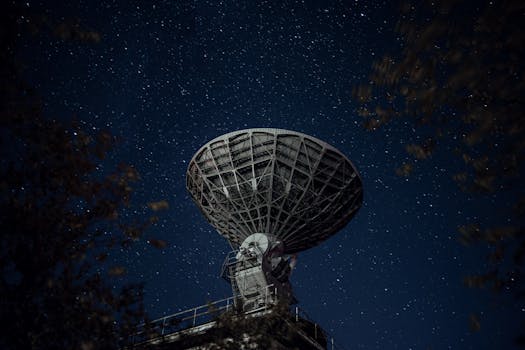Starlink: The Revolutionary Satellite Constellation Changing the Face of Global Connectivity

Starlink: The Revolutionary Satellite Constellation Changing the Face of Global Connectivity
Starlink is a satellite constellation developed by SpaceX, a private aerospace manufacturer and space transport services company founded by Elon Musk. The project aims to provide high-speed, low-latency broadband access to the entire world, revolutionizing the way we communicate and access information. With its launch, Starlink is poised to change the face of global connectivity, bridging the digital divide and bringing the internet to underserved communities around the world.
At the beginning of Starlink, it is essential to understand the context and motivation behind this ambitious project. The idea of creating a satellite constellation was first proposed by Elon Musk in 2015, with the goal of providing global internet coverage and generating revenue to support SpaceX’s interplanetary missions. Since then, the project has gained significant momentum, with the first batch of satellites launched in May 2019. As of now, Starlink has launched over 3,000 satellites into orbit, with plans to deploy up to 42,000 satellites in the coming years.
How Starlink Works
Starlink’s technology is based on a constellation of low-Earth orbit (LEO) satellites, which operate at an altitude of approximately 550 kilometers. Each satellite is equipped with a phased array antenna, which allows it to communicate with multiple users simultaneously. The satellites use the Ku and Ka frequency bands to transmit and receive data, providing speeds of up to 1 Gbps and latency as low as 20 ms. This makes Starlink an attractive option for applications that require high bandwidth and low latency, such as online gaming, video streaming, and virtual reality.
The Starlink system consists of three main components: the satellites, the ground stations, and the user terminals. The satellites communicate with the ground stations, which are responsible for connecting the satellite constellation to the global internet backbone. The user terminals, which are small, compact devices, communicate with the satellites and provide internet access to users. The user terminals are designed to be easy to use and install, making it simple for users to set up and start using the Starlink service.
Benefits and Impact of Starlink
The potential benefits of Starlink are numerous and significant. One of the most significant advantages of the system is its ability to provide global coverage, including in areas where traditional fiber-optic or cellular networks are not available. This makes Starlink an attractive option for rural or underserved communities, where access to broadband internet is limited or non-existent. Additionally, Starlink’s low latency and high speeds make it an attractive option for applications that require high bandwidth and low latency, such as online gaming and video streaming.
Starlink also has the potential to revolutionize the way we communicate and access information. With its global coverage and high speeds, Starlink could enable new applications and services that are not possible with traditional internet infrastructure. For example, Starlink could enable remote healthcare services, such as telemedicine, or provide access to online education and training programs. Additionally, Starlink could enable new forms of communication, such as video conferencing and virtual reality, which could revolutionize the way we interact with each other.
Challenges and Limitations of Starlink
While Starlink has the potential to revolutionize global connectivity, there are also several challenges and limitations to the system. One of the main challenges is the cost of the service, which is currently priced at $99 per month for the residential plan. This makes Starlink more expensive than many traditional internet services, which could limit its adoption in some areas. Additionally, the system requires a clear line of sight to the satellites, which could be affected by obstacles such as trees or buildings.
Another challenge facing Starlink is the regulatory environment. The system operates in a highly regulated industry, and there are concerns about the potential impact of Starlink on the environment and the orbital debris problem. Additionally, there are concerns about the potential for Starlink to disrupt traditional internet infrastructure and the business models of traditional internet service providers.





